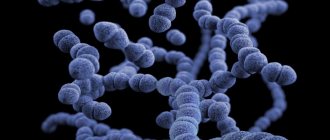In this article we will tell you:
- Physical and psychosomatic causes of allergies
- Common types of allergies: causes and symptoms
- Reasons for the increase in allergy incidence
- How to identify the cause and detect the allergen
- Foods that often cause food allergies
- Dietary recommendations for allergies
Cough, skin rashes, difficulty breathing, itchy eyes - this is an incomplete list of allergy symptoms. The development of allergies is influenced by a number of factors: genetic predisposition, indoor and outdoor air pollution, poor diet and some others. We tell you why our body can react this way to quite ordinary substances, how to identify an allergen and what nutritional principles to follow.
Physical and psychosomatic causes of allergies
Allergy
- a pathological reaction of the immune system associated with increased sensitivity to certain substances - allergens.
The body decides that they are dangerous to its survival, and the allergic person begins to experience symptoms of his illness.
This is an abnormal process, since the most ordinary things become allergens: everyday food, pollen, house dust, animal hair, etc. According to the World Health Organization, allergies are among the most common non-communicable diseases, affecting 35% of the population and continuing to spread rapidly.
This is influenced by the environmental situation, changes in the food preferences of modern people and information influence.
There are more and more substances in the environment such as sulfur dioxide, nitrogen oxide, ozone, and diesel fuel particles. All this contributes to the chemical modification of allergens and increased permeability of cell walls. The cells become easily accessible for allergens to penetrate and, accordingly, trigger an immune response.
However, for you to develop an allergy, it is not enough to eat some new fruit or pet your neighbor’s cat. Sensitization is necessary - increasing the body's sensitivity to any substance, which will subsequently become an allergen.
Allergens are divided into two types
. If they enter the body from the outside, then they are called exoallergens (from the Greek ἔζω (exo) - from outside, from outside).
If allergens arise inside the body, then they are called endoallergens (Greek ἔνδον (endo) - from the inside, inside) or autoallergens (from the Greek αὐτόζ - itself). For example, such an allergy often develops to proteins secreted by the body during the rheumatic process.
Examples of the most typical exoallergens
:
- house and street dust;
- plant pollen;
- animal hair and human hair;
- Food;
- household chemicals;
- medicines;
- waste products of insects and animals;
- bacteria, viruses and their toxins.
Mechanism of development of an allergic reaction:
Every day we encounter thousands of substances foreign to the body: viruses, bacteria, pollen, waste products of insects and animals, food, medicines, industrial emissions and many others.
When such a substance enters the body, the process of producing antibodies is launched - special protein compounds that are designed to neutralize the effects of foreign substances. That is, antibodies are a kind of guards inside us. In this case, each antibody is responsible for neutralizing one foreign substance.
If the immune system fails, antibodies are produced in excess. When the allergen enters the body again, they are activated and trigger a cascade of biochemical reactions, as a result of which special substances are produced, including histamine. Its sharp release, in particular, leads to the development of allergy symptoms and their various manifestations.
To make it clearer what allergies are, let’s find out what types of allergic reactions exist.
Moreover, some allergic reactions can be combined, combining 2-3 types of allergies.
Type I - allergic reactions of the reagin type or IgE-related
In response to exposure to an allergen and the development of sensitization to it, special antibodies of the IgE class occur. There is an active release of substances (histamine, leukotrienes, etc.) that cause acute allergic reactions from the blood vessels, skin and other body systems. For example, allergic rhinitis (runny nose), allergic conjunctivitis (symptoms are clearly manifested on the mucous membrane of the eye - the conjunctiva), bronchial asthma, etc.
We recommend
“Foods that are good for the intestines: nutrition for increased gas formation, IBS and constipation” Read more
Type II - cytotoxic
Cells are damaged as a result of the formation of antibodies, damage can occur due to
:
- activation of complement and the damaging effects of its fragments;
- phagocytosis;
- damage and dissolution of cells with antibodies by special NK cells - so-called antibody-dependent cellular cytotoxicity.
Allergic reactions can lead to complications after transfusion of blood and its components, and blood diseases associated with the immune response.
Type III - immunocomplex allergic reactions
Antibodies either react incorrectly to body tissues or the tissues themselves change so that they become foreign. As a result, the immune system quickly and mercilessly attacks them, and diseases such as serum sickness, systemic lupus erythematosus, rheumatoid arthritis and other systemic autoimmune diseases develop.
Type IV - delayed type allergic reactions
They are associated with immune activity and develop due to changes in lymphocytes. Most often possible with contact dermatitis, rejection of transplanted tissues, manifestations of tuberculosis, brucellosis, leishmaniasis, etc.
Research into the biological mechanisms of allergies points to a complex interaction between factors such as genetic predisposition and environmental influences.
However, there is another interaction - the interaction of mind and body. The emergence of physical symptoms of illness as a result of this interaction is called psychosomatics.
Psycho-emotional stress affects the nervous, endocrine and immune systems involved in the formation and exacerbation of various diseases.
For example, the team of the PSY 2.0 school of psychosomatics has completed large-scale research on the use of the author’s PSY2.0 method to assess its effect on the condition of people with various types of allergies.
Study
: Methods of treating allergic diseases using the psychosomatics method 2.0
The method was developed by Mikhail Filyaev based on the principles of psychosomatics and hypnotherapy, as well as a special clinical protocol he created without the use of pharmacological treatments.
This approach is based on the postulate that any disease is triggered by some emotionally traumatic event, which in the psychosomatics paradigm is characterized by a state of stress or strong emotional involvement. Reproduction of a context or track that acts as an associative link to the traumatic triggering event leads to the emergence of a symptom because it is perceived as life-threatening. If we consider an allergy, such a symptom is an allergic reaction, as a way of protecting the body to avoid reliving this event.
This method allows, using a set of developed techniques, to find such an event in a person’s life, remove the involvement from it by becoming a habitual reaction, and also establish other ways for the individual to react in similar situations, which takes him out of permanent stay in tracks and reacting by triggering an allergic reaction.
This approach to the treatment of allergic diseases is environmentally friendly and safe for human health and, most importantly, removes the psychosomatic causes of the onset and maintenance of the disease.
The studies were conducted using evidence-based medicine methods. Each patient received two psychological counseling sessions lasting 40 minutes.
It was found that the number of allergens in the study participants decreased by an average of 55%, and their well-being and level of social adaptation improved.
In 85% of participants diagnosed with allergies, there was an increase in the amount of immunoglobulin G by 10-20% over two psychotherapeutic sessions.
Subjective ratings: 42% of patients noted a significant reduction in symptoms and another 23% completely ruled out an allergic reaction, another 16% had a short-term reduction. The worst results were in patients taking pharmacological drugs.
Many studies have reported psychosocial influences on the onset and progression of allergic diseases such as asthma and atopic dermatitis.
According to Japanese scientists, their development is preceded not only by genetic predisposition, but also by a number of other factors, in particular, the so-called “preparatory factors”. These are, for example, polluted air, psycho-emotional stress in childhood, character and behavioral problems.
If a certain activating factor is added to this “preparatory state”, such as exposure to an allergen, a cold or stress, the disease can manifest itself. Or the course of an existing disease will worsen.
And, conversely, by reducing the psycho-emotional stress, asthma symptoms can be improved, or even gotten rid of them.
It is believed that most asthma patients are meticulous individuals or perfectionists who suppress their feelings or adapt to the opinions of others. They tend to have severe symptoms. This is explained by the fact that such people quickly get tired and cannot seek help from the people around them.
In addition, some people who have had problems with their parents since childhood or who were bullied at school may have a mistrust of other people, feelings of anxiety and/or self-denial. As they grow up, they often retain strong conflicts in their interpersonal relationships and experience anxiety or stress when faced with problems.
Targeted nutrition tips
that will increase your energy level by 10 out of 10
From TOP nutritionists of the MIIN
Get tips
There is evidence indicating that the development and course of allergies can be influenced not only by one’s own psychological state, but also by the psychological state of loved ones, especially mothers.
The study, which analyzed information on 7,250 children, found that maternal anxiety and depression may mediate the link between a child's rash and wheezing and mental health. Moreover, this connection was especially evident when the child was 8 years old.
Scientists also believe that even if a mother experiences depression while pregnant or during the postpartum period, this also increases the likelihood that her child will have eczema or asthma. And caring for a child with eczema or asthma is associated with high levels of anxiety, depression and sleep deprivation in parents, which in turn can affect the child's psychological well-being.
Study
: Child Allergic Symptoms and Mental Well-Being: The Role of Maternal Anxiety and Depression
But, even if the child does not have allergies, excessive parental anxiety and worries can ultimately lead to the onset of the disease.
A study conducted in the UK indicates that 31% of parents of infants believe that their child has some kind of food intolerance. When the children turned three years old, the number of parents with this belief was already 34%.
Such fears can lead to the deliberate exclusion of certain foods from the child’s diet due to fear of allergies. In fact, as research results show, such restrictions, on the contrary, may be the cause of allergies in the future. They can also lead to the formation of an unbalanced diet in a child. Which is bad for his growth and development.
But early introduction of potential allergens during breastfeeding, but not earlier than 6 months, can protect the child from allergies in the future.
Study
: Can Food Allergies Ever Be Psychological
A 2008 study compared the prevalence of peanut allergy in Jewish children from Israel and the UK. As a result, it was noticed that such allergies are more often recorded in children from the UK, where peanuts were introduced into the diet later and less frequently.
Similarly, a Swedish study confirms that introducing fish to a child's diet before age one reduced the risk of fish allergies later in life.
The skin performs not only protective, thermoregulatory functions, but also psychological
:
- is the boundary between a person and the environment, between “I” and “you”;
- is an organ of contact, a bridge to the environment;
- is an organ for expressing emotions: worries, fears, fear, joy, shame;
- is an organ with a unique aesthetic function;
- is one of the sense organs (sensation of heat, cold, pain, burning, etc.).
The skin expresses emotions: it “turns red” with shame, “turns pale” with some other experiences, and becomes “goosey” with fear and cold.
A person who steadfastly accepts the biases of fate, who is calm and indifferent, is often called “thick-skinned.” Very often, stressful situations are the trigger for the development or exacerbation of dermatitis.
Can be psychosomatic in nature
:
- atopic dermatitis
(a clear manifestation of food allergy, occurs with itching, various skin rashes, enlarged lymph nodes);
- perioral dermatitis
, which is characterized by inflammation of the perioral area (around the mouth) with redness, rash, peeling and itching;
- alopecia
(local or total baldness);
- hives
- an acute allergic reaction, manifested by severe itching and the appearance of blisters of various sizes;
- angioedema
(Quincke's edema) - an acute allergic reaction, manifested by swelling of the face, hands and feet, in severe cases - up to diffuse edema (anasarca).
In the personality structure, emotional attachment to other people, excessive expectations, worries are important; efficiency and distrust of people of the opposite sex predominate.
Before treating allergies, you need to understand whether psychosomatics play a role in the formation of symptoms. If psychosomatic factors worsen the symptoms of the disease, you need to choose the right therapy.
Common types of allergies: causes and symptoms
There are quite a few manifestations and forms of allergic diseases, and the symptoms of one type of reaction can vary greatly among different people. In addition, symptoms are easily confused with signs of other diseases, which often interferes with an accurate diagnosis.
We recommend
“Foods good for the kidneys: TOP-25 for good health” Read more
This diversity is due to several reasons.
:
- The place where the allergen enters the body, where the difference can be significant between introduction through the respiratory tract or skin, with food, etc. The most favorite targets for allergies are the mucous membranes of the respiratory tract, including the nose and nasopharynx, eyes, and skin.
- Individual characteristics of immunity and immune response.
- The health status of the organ that has become a target for the allergen.
Types of allergies
:
- Allergic dermatitis
Skin manifestations, which most often affect exposed parts of the body that come into contact with care products or diapers.
- Allergic conjunctivitis
Develops due to sensitization to flowering plants, waste products of pets, due to food allergies.
- Allergic enteropathy
Drug or food intolerance with symptoms such as abdominal pain, prolonged and severe attacks of colic.
- Hay fever, hay fever
Annual exacerbation of allergies associated with flowering or ripening of plants.
- Allergy to ultraviolet light
Manifests itself in the form of urticaria, itching and pain.
- Urticaria or urticaria rash
The name accurately reflects the nature of the reaction: it is similar to nettle burns or multiple insect bites.
- Allergic rhinitis
A reaction to food and household allergens, but the main provocateur of seasonal rhinitis is flowering and dusting of trees and plants.
- Drug allergy
Develops in response to the introduction of medications into the body.
- Cold allergy
An allergic reaction to low air temperature, manifested in the form of difficulty breathing, swelling of the mucous membranes of the nose and eyes, and redness of the skin.
- Quincke's edema
An acute allergic reaction that requires emergency medical attention. It is observed with food or drug allergies, with insect bites or after contact with an animal.
The most dangerous allergic reaction is anaphylactic shock.
, that is, an immediate type reaction that develops, as a rule, at lightning speed or very quickly, within a few minutes, rarely - several hours.
Very often, such a shock is caused by an allergy to medications. According to some sources, about 0.65–2% of cases of anaphylactic shock are fatal.
We recommend
“Osteoporosis: prevention and principles of diet therapy” Read more
In addition to drugs, anaphylactic shock can develop with food allergies, as a reaction to the ingestion of proteins, poisons of insects and reptiles.
Remember a few symptoms that you should pay close attention to, because each of them may indicate the development of anaphylactic shock, and emergency measures must be taken: itching of the skin, abdominal pain due to food allergies; shortness of breath, feeling of lack of air; suffocation; pale skin; convulsions; drop in blood pressure; fainting or loss of consciousness; vomit.
Subcutaneous ASIT
In subcutaneous immunotherapy, allergens are injected into the subcutaneous tissue (usually the arm) every 7-14 days in increased doses until the maximum tolerated concentration is reached, which may vary depending on the drug and the patient's sensitivity. With traditional injectable medications, the patient must visit a doctor monthly for injections, while some new immunotherapy injections require only a few treatments (eg, 4 preseason annual injections) to achieve improvement in more than 90% of patients, with high rates safety and adherence to therapy.
These time-optimized treatment regimens are made possible, among other things, by the use of allergens (allergens modified and optimized in structure) and adjuvants—substances that increase the effectiveness of immunotherapy. In particular, the latter guarantee a high level of therapy effectiveness with maximum ease of use for the doctor and the patient.
For example, for pollen allergies, treatment is usually carried out before the start of the pollen season: for tree pollen - from August to December, and for grass pollen - from October to March. Specific immunotherapy, either sublingual or subcutaneous, rarely causes side effects, such as mild symptoms due to local reactions at the injection site (itching at the injection site, tingling in the mouth). In this case, the specialist will advise adjusting the dose the patient will take.
The treatment cycle in both cases lasts a total of 3 to 5 years, which is necessary to maintain the clinical benefit obtained after cessation of treatment.
Reasons for the increase in allergy incidence
Research shows that in the modern world more than 20% of the population suffers from allergic diseases.
Scientists have long been searching for the cause of the body’s reaction to seemingly harmless and common substances. Currently, there is no definite answer, but science has many theories, one of which is the theory of old friends. She explains such a surge in allergic diseases in recent years by the culture of hygiene and a changed way of life.
According to the old friends theory, these microorganisms help a person resist allergens by acting as training antigens for the immune system and setting up the work of its components from early childhood. Reduced contact with them has caused an increase in the incidence of secular diseases, as allergies and autoimmune diseases were previously called.
In the human body, mechanisms that fight pathological microorganisms are also responsible for the development of allergic reactions. Improved living conditions and higher standards of personal hygiene have led not only to an increase in life expectancy and an improvement in its quality, but also to a decrease in the number of pathogens with which a person comes into contact every day.
And to set up and develop the regulatory mechanisms of immunity, external stimuli are needed: bacteria, viruses, helminths, parasites. When these old friends become fewer, the immune system has a hard time learning. As a result, she begins to perceive simple substances: food, wool and pollen as pathogens.
However, the development of allergic reactions is influenced not only by external microorganisms, but also by human microflora - those microorganisms that live in our body, primarily in the gastrointestinal tract.
There is a connection between human microflora and the development of allergic diseases, especially food allergies. Intestinal microflora takes part in the formation of the immune response and adjustment of immunity (especially in the first months of life), while the risk of developing food allergies is reduced, tolerance to food allergens is increased and a secretion is synthesized that covers the mucous membrane and does not allow antigens to penetrate into the bloodstream through the intestinal wall. It also neutralizes pathogens living in the intestines.
We recommend
“Vitamins for Heart Health: Strengthening the Heart in Old Age” Read more
Due to disturbances in the composition of the gastrointestinal microflora, the secretion of immunoglobulins A (IgA), which normally prevents the attachment of antigens to the mucous membrane of the digestive canal, decreases, and the permeability of the intestinal wall for macromolecules increases, which provokes the development of allergies.
Which microorganisms are our friends?
The human body is colonized by a huge variety of bacteria, their number is 10 times greater than the number of human cells. The microflora of each person has a unique composition, and different diseases are characterized by a deficiency or surplus of certain microorganisms.
For example, research results show that children suffering from bronchial asthma in combination with allergic rhinitis are characterized by a deficiency of both bifidobacterium (Bifidobacterium) and lactobacilli (Lactobacillus). Research has also been conducted on the connection between allergies and bacteria of the genus Clostridium. Clostridia regulate the function of immune cells and the permeability of the intestinal wall, which prevents the development of sensitization to allergens.
Most other theories link the increase in the number of allergic diseases to external causes that increase a person's risk of developing allergies. These include environmental pollution, the use of preservatives in food, cosmetics and cleaning products, and stress.
However, it should be taken into account that they also affect the human microbiome, changing the composition of microorganisms and contributing to the occurrence of metabolic disorders, immune response and susceptibility to disease. Accordingly, it is incorrect to say that the development of allergies depends only on external factors.
How to identify the cause and detect the allergen
The success of treating allergic diseases depends on whether it has been possible to eliminate the exposure of the body to the substance that causes the allergy.
Therefore, it is important to accurately determine which allergen the patient is sensitive to. An allergy test can determine this. However, there are several types of such tests that can cause an allergy attack, so they are performed only in a clinic under the supervision of an allergist.
Skin tests
- done only to those patients who are not in the acute stage at the time of the study.
During the procedure, a substance that could potentially cause an allergic reaction is injected through the skin and the effect is then observed. In this case, standardized allergens are used, dissolved in water and obtained from grass and tree pollen, house dust, and so on. If swelling and redness appear, then specialists evaluate the severity of the changes and draw a conclusion about the presence and severity of allergies.
We recommend
“Good carbohydrates: list of foods for weight loss” Read more
Diseases for which allergy tests are prohibited
:
- Exacerbation of a chronic disease (for example, peptic ulcer, hypertension, rheumatism, etc.).
- Acute infectious process.
- Tuberculosis is in the acute stage.
- Pregnancy, breastfeeding.
- Previous severe allergic reaction (primarily anaphylactic shock).
In addition, skin tests are not recommended for young children (under 3 years of age), patients receiving therapy with glucocorticosteroids, antiallergic drugs (H1-histamine receptor blockers).
Laboratory diagnostic methods
In some cases, blood tests are important to establish a diagnosis.
Indications for blood tests for allergies
:
- Contraindications to skin tests.
- Age under 3 years.
- Severe allergic reaction at the time of the study.
- A chronic disease in acute form that occurs without remission.
- It is not possible to discontinue antiallergic medications and some other conditions during the study.
When choosing an allergy test method that suits you, always listen to the opinion of your doctor and avoid self-medication - these methods require a careful and thoughtful approach, which is only possible in a good clinic or hospital.
Sublingual ASIT
With sublingual immunotherapy, the allergen is held under the tongue for a short time (1-2 minutes) and then swallowed. If injections are avoided with this treatment (usually daily), then in order for it to be effective, the patient must remember to take the vaccine daily, and this requires adherence to the therapy regimen. This method is well tolerated, so after initial treatment in an outpatient setting, it can be continued at home. This type of therapy is a good option for patients who are afraid of injections, for children, and for people who, due to work or living conditions, have difficulty getting regular injections in the doctor's office.
Foods that often cause food allergies
Food allergies
is a common problem, especially in children: on average, it occurs in 10% of children and 2% of adults. Research shows that people are sometimes misled about their condition. According to a report in JAMA Network Open, 19% of respondents believed they had a food allergy, although in reality the figure was only 10.8%. Why did it happen?
We recommend
“Proper nutrition for health and a slim figure: menu for the week” Read more
Some symptoms of food allergies and intolerances are similar: both may cause gastrointestinal symptoms. However, most allergic symptoms, such as hives, watery eyes and difficulty breathing, are not characteristic of food intolerance. If you experience an unusual reaction to food, you should consult a doctor. The specialist will conduct an examination that will help determine the cause of the symptoms and prescribe the correct treatment.
Food allergies
– increased sensitivity of the body to food products, caused by the immune mechanism of development. The result is unpleasant symptoms ranging from hives and diarrhea to more serious ones, such as anaphylactic shock and angioedema.
Important point
: Even a minimal amount of allergen can provoke an allergic reaction. This means that if the examination shows an allergy to strawberries, then it will have to be excluded completely, no “a little bit won’t do anything.”
Food intolerance is a non-immune reaction, most often caused by the absence or insufficient amount of enzymes involved in the digestion or metabolism of food components. Typically, intolerance manifests itself as symptoms only in the gastrointestinal tract. Most often, the body's reaction depends on the amount eaten.
What foods are the most allergenic?
- Cow's milk
- Allergy to milk protein develops especially often in young children
- Egg
— it contains 13 protein allergens. The most significant are ovomucoid, ovalbumin, conalbumin, lysozyme, ovoglobulin, and yolk levetin.
- Fish
— fish allergens are heat-stable, that is, they are practically not destroyed during cooking. Severe systemic reactions can develop when even a small amount of the product enters the body. At the same time, reactions to sea fish are more common than to river fish.
- Wheat
- proteins from cereals, especially wheat and rye, can cause allergies.
- Seafood
- have pronounced allergenic properties. These include crustaceans (shrimp, crabs, crayfish, lobsters) and shellfish (mussels, scallops, oysters, squid, octopus, etc.).
- People who are sensitized to seafood proteins, mainly tropomyosin, may develop cross-linked allergic reaction to components of house dust
(insect particles, house dust mites).
- Peanut
- contains a wide range of allergens, the irritating properties of which increase after boiling or roasting peanuts.
- It is important to read labels; they often contain warnings to this effect. Peanut
may cause severe reactions, including anaphylaxis.
- Soybeans
– soy contains proteins that can cause allergies, the most dangerous are glycinin and conglycine.
Like peanuts, it is often a hidden allergen in food. For example, a reaction may occur due to boiled sausage containing soy as a filler.
The same foods play a different role in the development of allergies in children and adults.
In childhood, an immune reaction is most often caused by cow's milk, chicken eggs, fish and legumes, and a little less often by gluten, banana and rice proteins. 76% of children are sensitive to several products at once.
We recommend
“Fat diet: basic principles and effect on the body” Read more
In adults, food allergies are usually cross-related, while the main disease remains a reaction to pollen, household dust or some other irritants.
If you are allergic to one product, for example, peanuts, then such a reaction may occur to foods that are identical in antigenic composition: soy, bananas, and others. Thus, a person who becomes ill from birch pollen is highly likely to be intolerant of peaches and apples.
People with latex allergies (such as cleaning gloves) may have an adverse reaction to kiwi, banana, and avocado.
So, if you know that you have allergies, be sure to have a reminder about possible cross-reactions between allergens.
Types of allergic or hypersensitive disorders.
Airway disorders include allergic rhinitis, allergic bronchopulmonary aspergillosis - caused by the fungus Aspergillus fumigatus, or allergic asthma.
Eye disorders include allergic conjunctivitis, vernal keratoconjunctivitis, and atopic keratoconjunctivitis.
Skin and mucous membrane irritations include allergic contact urticaria, allergic oral syndrome, acute IgE-mediated urticaria, and atopic eczema.
Drug hypersensitivity includes drug-induced urticaria, angioedema, and anaphylaxis, as well as the Fernand-Vidal triad of symptoms (polyposis rhinosinusitis, asthma attacks, and intolerance to nonsteroidal anti-inflammatory drugs).
Food hypersensitivity includes urticaria, anaphylaxis, angioedema, IgE-mediated food hypersensitivity of the gastrointestinal tract, as well as oral allergy syndrome - IgE-mediated damage to the oral mucosa in people who have eaten raw fruits and vegetables, nuts, and beans; The mechanism in this case is a cross-reaction in people sensitive to the pollen of certain plants.
Hypersensitivity or allergy to insects includes anaphylaxis, skin reactions.
Dietary recommendations for allergies
Hypoallergenic products are safe for most allergy sufferers. Following a hypoallergenic diet is not easy due to quite large restrictions. And yet, it is quite possible to choose a diet that will be enjoyable; the main thing is to determine what substance you are allergic to. But remember that only a specialist can create the optimal diet for you.
First of all, exclude foods to which you have individual intolerance and the strongest allergens.
:
- Eggs
- Wheat
- Fish
- Nuts
- Peanut
- Crustaceans (shrimp, crabs, lobsters)
- Citrus
- Chocolate
- Red fruits and berries
- Soybeans
- Honey
We recommend
“Amount of protein: content in food products and consumption rate” Read more
Listed below are foods that are statistically less likely to cause an allergic reaction. They can be combined with each other and thus create a unique menu for every day
:
- All types of vegetables (as many as possible, including the whole rainbow of colors in the diet)
- Herbs, greens and spices.
- High-quality meat (grass-fed) and poultry (not much, due to the content
- omega-6).
- Healthy fats (butter, avocado oil, coconut oil)
- Fruits (no more than 40 g of fructose per day, 20 g is optimal).
- Fermented foods
Try to choose the highest quality products possible and eat as much variety as possible.
How long should you follow the diet?
As a rule, the diet is prescribed for a period of one to two weeks and the effect is monitored. After the symptoms subside, the diet should be gradually expanded, adding previously excluded foods, but you need to ensure that they do not contain artificial food additives: dyes, preservatives, emulsifiers - they irritate the gastrointestinal tract.
If you suspect you have a food intolerance to a particular food, an elimination diet may be appropriate.
An elimination diet is a short-term eating plan that eliminates certain foods that can trigger negative digestive reactions. Next, the products are reintroduced one at a time to determine which ingredients are well tolerated by the body and which are not.
The procedure is as follows
:
- Select the product you want to test your body's tolerance to it. Be prepared to eat it 2-3 times a day and then avoid it for several days.
- The first time you try food, start with half a teaspoon or less. Wait 15 minutes.
- If symptoms already begin, put the product aside. If nothing happens, eat another whole teaspoon or piece of this product. Wait 15 minutes again.
Possible symptoms
:
- Symptoms of your illness return or get worse.
- Gastrointestinal symptoms: abdominal pain, heartburn, nausea, constipation, diarrhea, change in frequency of bowel movements, flatulence, undigested food particles in the stool.
- Energy: Decreased energy, feeling tired, low energy in the afternoon along with increased energy in the evening, preventing you from falling asleep at the right time.
- Headache.
- Dizziness.
- Increased mucus - runny nose, nasal congestion.
- Desire to cough and clear throat.
- Itching in the eyes or mouth.
- Sneezing.
- Pain in muscles, joints and ligaments.
- Changes in the skin: rash, acne, dryness, redness.
- Mood problems: frequent changes or depressed mood.
- Fog in the head.
- Feeling restless.
- If symptoms begin, put the product aside. If not, then continue taking the product, increasing the volume to 1.5 teaspoons or a slightly larger piece.
- Leave it at that for now. Wait 2-3 hours after eating and monitor for symptoms during this time.
- After the time has elapsed, eat a full portion of this product either as a separate dish or as part of breakfast/lunch/dinner.
- After this, do not eat this product for 5-7 days and do not add any other trigger foods. Monitor your symptoms.
- If you do not experience any symptoms during the first trial day and then after 5-7 days, you can include this product in your diet.
We recommend
“Rational nutrition: principles and features” Read more
Unfortunately, it is not always possible to prevent the body from being exposed to an allergen. However, in cases where this can be achieved, the course of the disease improves significantly.
Here are some ideas for a hypoallergenic diet menu
:
- Cooked whole grains (from brown rice, buckwheat, millet or quinoa). You can add some coconut, ghee and/or cinnamon. To increase your protein intake, drink a drink with rice protein powder.
- Homemade potatoes: Cut onions, peppers, broccoli, mushrooms and other vegetables into small pieces as desired and sauté them in olive oil or ghee. Cut the pre-steamed potatoes into cubes and add to the vegetables. Add salt/pepper/herbs/spices.
- Large salad with chicken or fish. Serve with gluten free bread/baked potato/pumpkin.
- Baked salmon and steamed or oven-roasted vegetables with cooked millet, baked potato/sweet potato or quinoa salad.
- Baked or steamed halibut, baked winter squash sprinkled with cinnamon and ghee, fresh green salad.
- Brown rice and chicken, sautéed spinach or any other greens, baked potatoes or sweet potatoes.
- Chicken breast dusted with garlic powder and tarragon, steamed asparagus or broccoli, brown/wild rice or buckwheat porridge, ghee or olive oil.
- Quinoa with chicken and vegetable soup or vegetable soup.
- Chicken salad: chicken, various greens, guacamole, millet with pine nuts.
- Braised turkey breast, brown or wild rice, steamed vegetables, salad with French dressing.
Conclusion
:
Before starting treatment, it is important to understand the mechanism of allergic reactions. This makes it more likely to come up with an effective and efficient plan to combat not only the symptoms, but also the causes of your allergic reaction. No matter how unpleasant and dangerous they may be, there is no need to “wind up” yourself once again. After all, the more nervous you are, the more severe the allergy can be.








